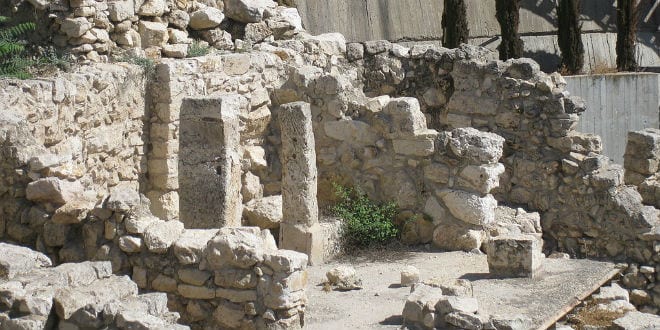
The book of 2 Samuel describes David’s conquest of Jerusalem from the Jebusites: “And David said on that day: ‘Whosoever smiteth the Jebusites, and getteth up to the gutter, and [taketh away] the lame and the blind, that are hated of David’s soul–.’ Wherefore they say: ‘There are the blind and the lame; he cannot come into the house.’” (2 Samuel 5:8) Following fifteen years of excavations, the possible site of that conquest and gutter was inaugurated in a secret ceremony which took place before Passover.
The fortress, built some 3,800 years ago, is being called the Spring House for its location over the mouth of the Gihon spring. That spring is the same one where David had his son Solomon crowned as his successor to the throne.

“When we open the Bible and read about King Solomon who was crowned here, on the Gihon Spring – today you can come and see: this is where it happened. This is where it all started,” said Oriya Desberg, the manager of development at the City of David.
Spring House was a Canaanite fortress built in the 18th century BCE, and is one of the largest pre-Herodian structures ever uncovered. It was excavated in one of the most complex and unique digs ever completed in Israel. The excavation, headed by Professor Ronny Reich from Haifa University and Eli Shukron from the Israel Antiquities Authority, took fifteen years.
The location and construction of the fortress serve to protect the spring and allow access only from the western side, within the city.
“In order to protect the water source, they built not only the tower – but also a fortified passageway that allowed the city residents a safe access to the water source,” archaeologist Joe Uziel said. “This very impressive structure was operating until the end of the Iron Age, and it was only when the First Temple was destroyed that the fortress fell into ruin and stopped being used.”

Excavations at the site actually began in 1867, 100 years before Israel reunified the Old City of Jerusalem. They were funded by the Palestine Exploration Fund and led by Captain Charles Warren. The first to reach the Spring House, however, was treasure-hunter Montague Parker, a real-life Indiana Jones searching for the lost Ark of the Covenant and King Solomon’s treasures. He had no authority to dig, so he bribed the Turks to look the other way as he explored. He operated there from 1909 to 1911, when he was noticed by an alert guard who was not in his pay. He was forced to flee to Cyprus for fear of his life. The remains of his century-old excavations can be seen in the fortress’s upper part.

The walls of the fortress are seven meters (nearly 23 feet) thick, and are made of 2-3 meter (6.5-10 foot) large stones. The fortress was impressively constructed without the use of mechanical tools.







